Contents
vSAN was introduced in 2014, around 8 years ago. We’ve seen impressive features introduced to the product over the years from All-Flash, Deduplication, Encryption, File Services and enhancements in how vSAN deals with failures and maintenance mode.
Since 2014 IT has evolved rapidly. No longer do we tend to run production workloads on spinning media. We also have better CPUs, better networking and even faster storage options with NVMe.
With all of this in mind, vSAN is evolving to meet today’s and tomorrow’s application requirements.
A New vSAN Architecture – ESA
Express Storage Architecture, or ESA is an optional next-get storage architecture. You can use the new ESA on ESA-approved vSAN ReadyNodes, allowing you to take advantage of the latest technologies for those workloads that need the very best performance.
vSAN ESA is, like regular vSAN, built into the hypervisor, so there is no additional software to install.
Reduced TCO with vSAN Express Storage Architecture
- vSAN 8 ESA allows for storage of data using RAID-6 but at the performance of RAID 1, thus making the most efficient use of storage space while having no negative performance.
- The new architecture eliminates costly cache devices from vSAN nodes.
- Furthermore, vSAN 8 ESA simplifies storage provisioning and other overheads.
vSAN ESA Eliminates Cache disks and Disk groups
In the regular (Original Storage Architecture) version of vSAN, we continue to use the concept of disk groups and cache devices.
Given the improvements in storage, particularly in the NVMe space, vSAN ESA introduces a new storage concept (for vSAN) of Storage Pools. Every storage device in a vSAN node will be used within the storage pool, instead of costly storage devices being reserved for cache etc.

Migrating to vSAN ESA (Enhanced Storage Architecture)
If you’re looking to migrate to vSAN 8 ESA, simply follow the 3 steps:
- Ensure your new vSAN ReadyNodes support vSAN ESA
- Apply Advanced or Enterprise Licensing
- Migrate your Virtual Machines with Storage vMotion without any downtime
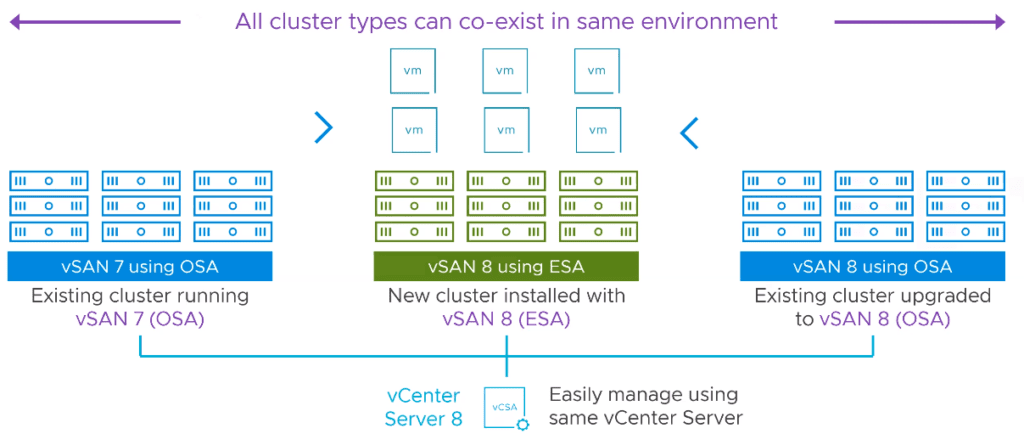
Key architecture changes in vSAN ESA
vSAN 8 ESA has a new patented Log-Structured File System.
The new log structure is designed to ingest high levels of different IO sizes both small and large. This means that large quantities of data can be accepted with low latency.
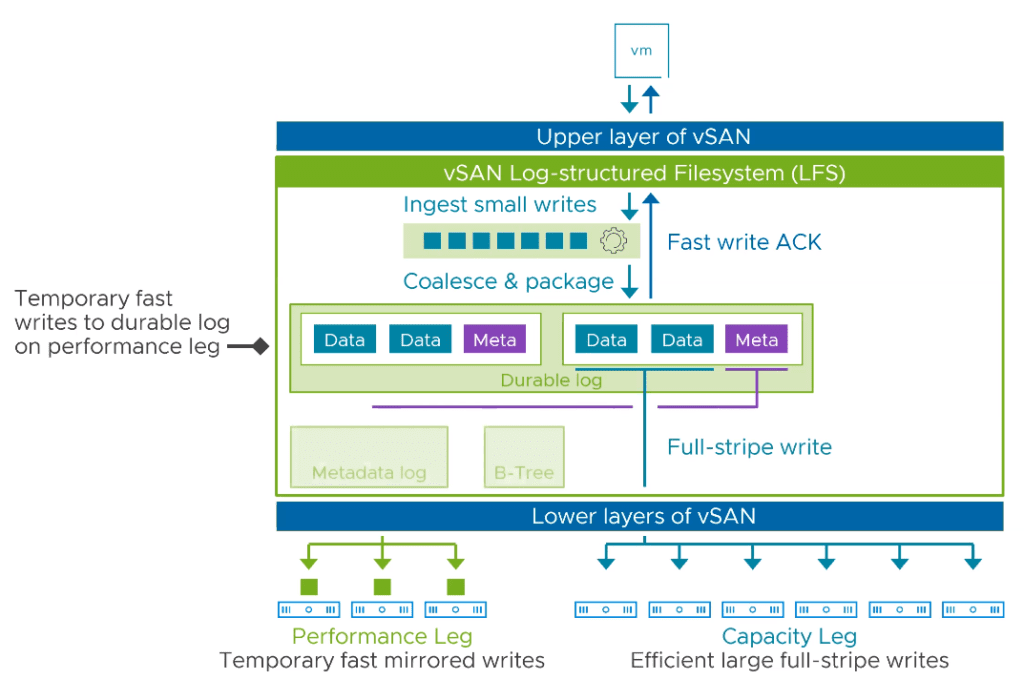
This enables:
- Reduced I/O amplification
- Lower overhead
- Futureproof against new storage hardware
- High-performance snapshots
New Data Structure
vSAN ESA also ships with an Optimized Data Structure with:
- Improved Space Efficiency
- High Scalability, removes the ned for “disk groups”
- Device-level Performance
- A Single-tier Architecture

Erasure Coding with the same performance as RAID-1
As writes are ingested into the system, they are committed to the performance leg (as mirrored writes), maintaining low latency for the workload.
Once the performance log fills up, the data will be written efficiently to the capacity leg with the correct number of stripes.
This allows us to use RAID-6 for best data protection and capacity utilisation but with the better performance of RAID-1

RAID-5 Cluster Aware Space Efficiency
In vSAN ESA, small clusters have an improved space efficiency mechanism which results in:
- 4+1 scheme using 1.25x capacity for resilient data storage
- 2+1 scheme using 1.5x capacity for resilient data storage
The RAID-5 scheme dynamically adjusts based on the cluster size:
- 4+1 is used with 6 or more hosts
- 2+1 is used when there are 3-5 hosts
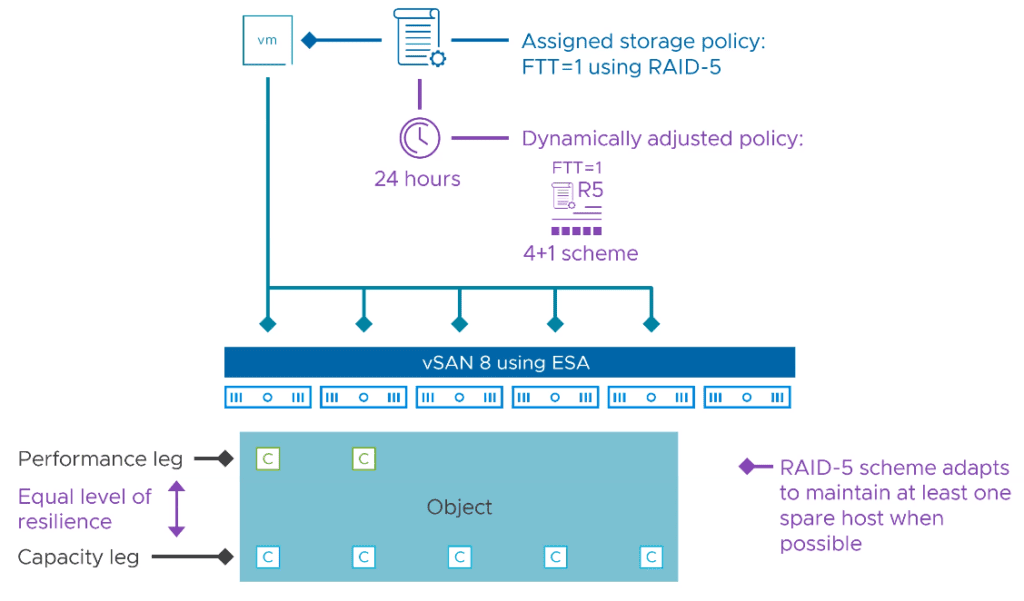
Highly Efficient Data Compression
Data compression is enabled and disabled on a per-storage policy basis (previously cluster level) and is now enabled by default.
Data compression now occurs very high in the storage stack. This minimises the CPU and Network cost which can now be used for other tasks.
Compression rates are at a very fine granularity and efficiency is up to 8:1 compression per 1KB data block.
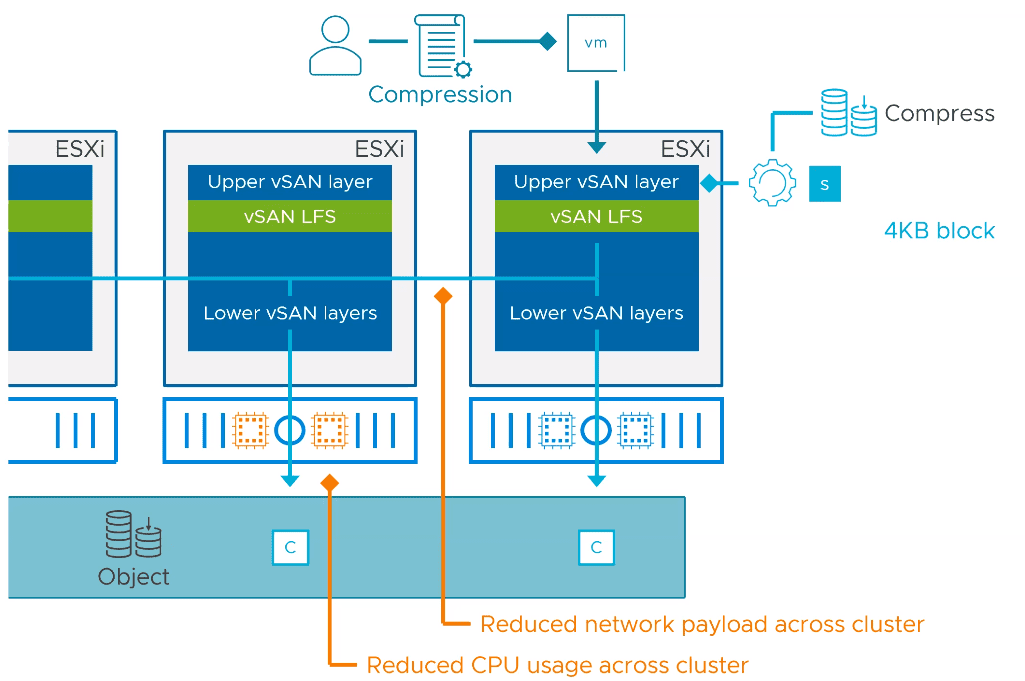
Adaptive Network Traffic Shaping
When there is network congestion in vSAN ESA, the new Intelligent I/O Management layer ensures a balance between VM I/O and resync I/O.
This will ensure a network link will not be saturated with vSAN resync traffic, ensuring bandwidth is available for VMs at all times.
This is dynamically adjusted on a per-host basis rather than set at the cluster level.
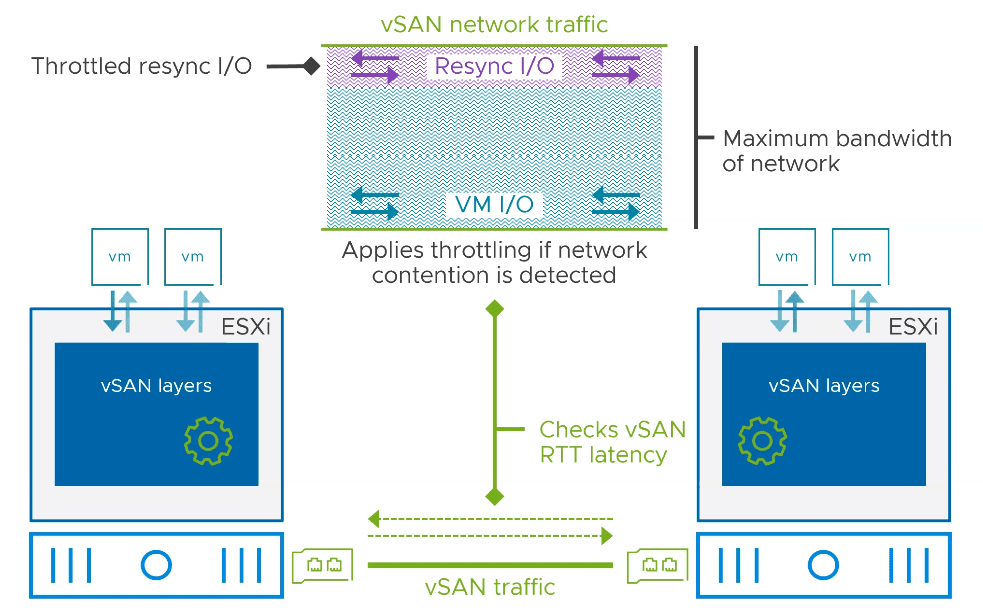
vSAN 8 – Updates to Traditional vSAN
Proactive Insights for Limited Connectivity
Applies to both vSAN 8 OSA (Traditional vSAN) and the new vSAN 8 ESA
Proactive notifications will now work even if you’re not enrolled in the CEIP.
As long as your vCenter Server is online, there is now improved health awareness for the environment, even when not enrolled in CEIP.
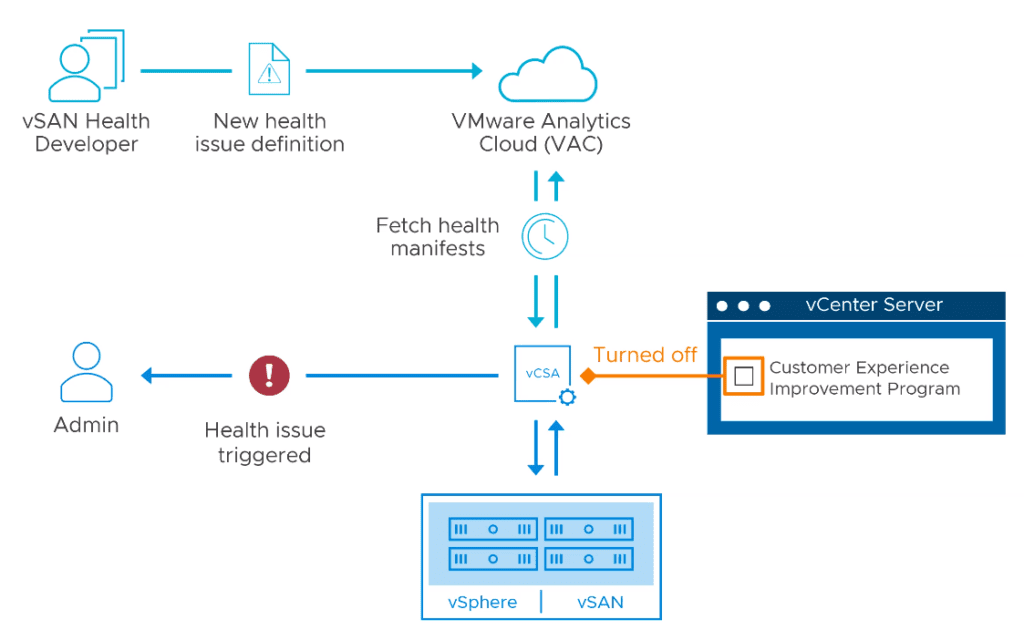
Increases to cache/buffer layers
In vSAN 8 VMware has increased the logical write buffer size to 1.6TB from 600GB. This is meaningful because we’re now able to ingest larger amounts of data at burse rate performance.
Furthermore, this reduces the I/O demand on the capacity tier.
An on-disk upgrade will be required to use this new capability.
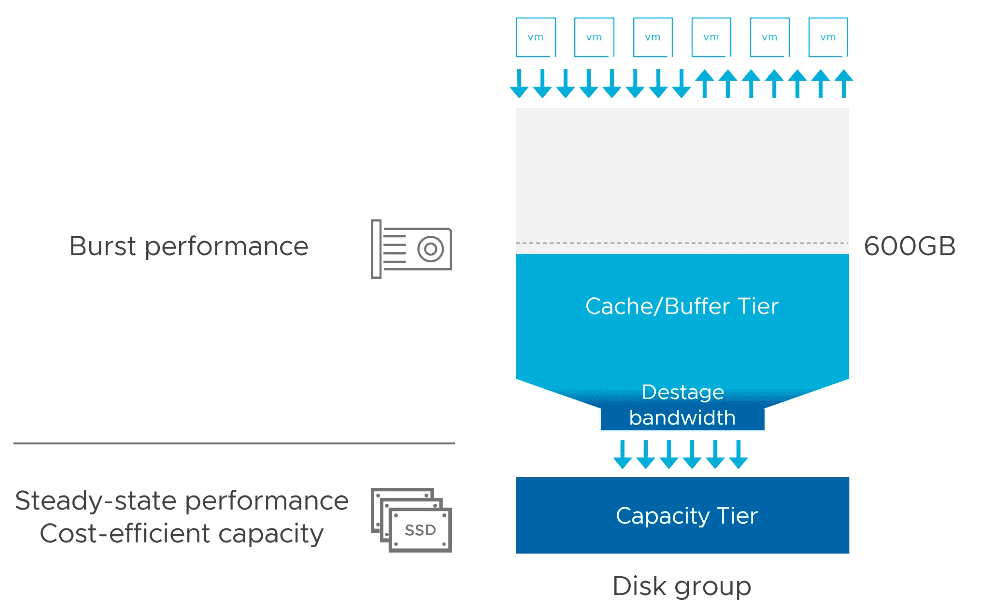
Download Media, Release Notes and Documentation
vSAN 8 is now available to download from the VMware portal here
You can also follow me on Twitter for instant updates.
For the latest in vSphere 8, be sure to check the recent blog post.


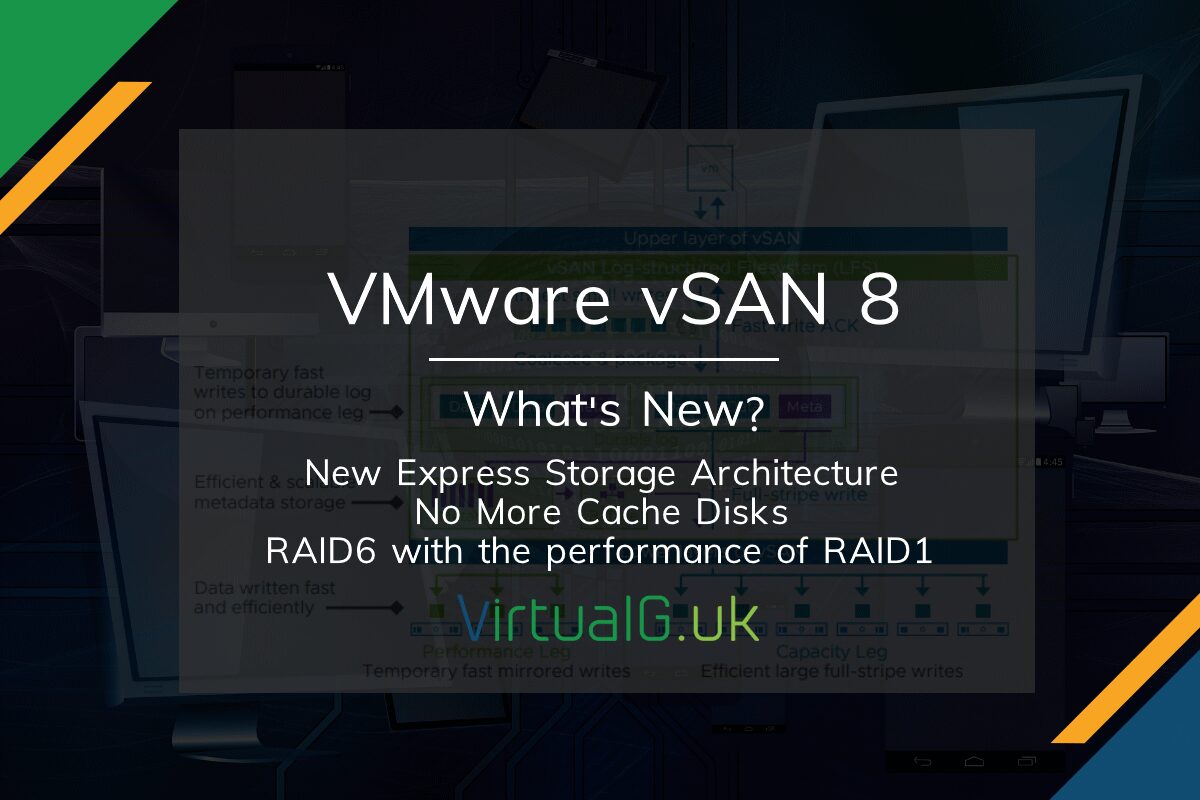


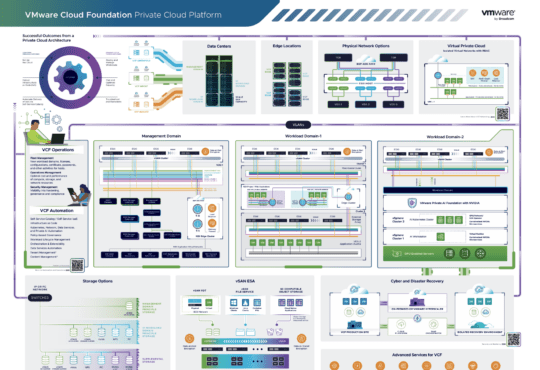



[…] vSAN 8 – What’s New […]
[…] You can also find out about the recently released vSAN 8 here […]